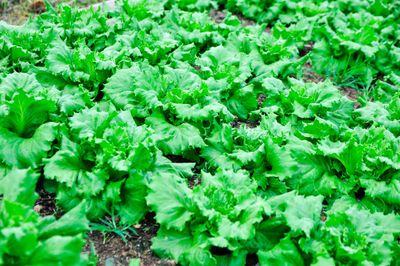What is Batavia Lettuce?
Batavia lettuce is a summer crisp variety that will germinate in warm temperatures and is slow to bolt. There are both open and close headed varieties in colors of green, burgundy, red, magenta, and mixed hues. All kinds of Batavia lettuce are open pollinated and good options for a late season garden. Batavian lettuce plants produce beautifully in cool days like most other lettuce varieties, but they also stand up once the heat comes. The seed will even germinate in temperatures that are too hot for most lettuce seed. Most summer crisp lettuce has loose, wavy leaved heads, but some are more compact and almost iceberg-like. The sweet, firmly ribbed leaves may be green-red, bronze-green, lime green, and many more hues. When several kinds of Batavia lettuce are planted in a bed, their ruffled leaves and variety of colors make for an attractive and tasty display.
Growing Batavian Lettuce
Because of Batavian’s good tolerance to heat, the seed can germinate at 80 degrees Fahrenheit (27 C.). Lettuce prefers full sun in well worked soil. Add plenty of well-rotted organic material and make sure there is good drainage. Lettuce should be watered from under the leaves to prevent fungal diseases. Keep Batavian lettuces moderately moist but not soggy. Lettuce shouldn’t need fertilizer if the soil is properly prepared with organic amendments. Keep weed pests out of the bed and use slug bait to combat those slimy pests and their cousins, the snails. If you have rabbits, you will also need to erect a critter fence.
Batavia Lettuce Varieties
There are many types of summer crisp lettuce. The green types are flavorful and some of the more heat tolerant. Loma has an almost curly endive appearance, while Nevada is a classic, open head. Other green varieties are Concept, Sierra, Muir, and Anuenue. If you want to add some color to your salad bowl, try growing some of the red or bronze types. Cherokee Red has green ribs and cores but purple-red leaves. Cardinale is another purple red but has a tighter head. Mottistone is delightfully speckled, while Magenta is colored just as its name indicates. All of these are easy to grow in organic rich soil and add tremendous variety to your produce bin.
